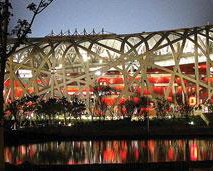- Belgium comes to Yamashita Park
- Residential Villa in Phuket Entices Remote Workers With Long-Stay Rates
- Rare pieces of French glass art at the Mirai Museum of Art
- Feast on fresh fish and seafood at the 2024 ‘Sakana’ Festival
- Would you like to ride in a Louis Vuitton gondola lift?
- Naked Snow Aquarium
- Festive lights at Yomiuriland will get you feeling the holiday vibes
Beijing Beckons

Most food hawkers have disappeared in the center and made way for restaurants and shopping malls, and the number of bicycles is dwindling. But the old Beijing is still there. Around the lakes, the 700 remaining Hutong (small 6-foot wide alleys) have now become protected by the government and are being restored. This trendy lakeside setting is the perfect place to get away from the city’s hustle and bustle for a few hours.
Beijing inhabitants, though concerned with rising prices, seemed content and happy with the opportunities at hand and the future for their children. Their priority is to be able to buy an apartment in the city where real estate prices are skyrocketing and salaries are relatively low.
As we strolled around this capital of the North, we could not help but marvel at the imperial allure of the city combined with the proliferation of remarkable modern architecture. Many of the positive changes were accelerated because of the Olympic Games. So even though recent publications conjure up terrible images of the Chengdu earthquake, polluted skies and contaminated food, Beijing is and always will be one of the top places to visit in the world and what better time to do so than in 2008?
WHEN TO GO: Spring (May/June) and fall (September/October) are the best seasons to visit Beijing unless of course you have tickets to the Games.
WHERE TO STAY: The Grand Hyatt, centrally located in the Wanfujing district, offers a great family package/room with lower weekend rates.
GETTING AROUND: Try to get around without a guide or private car. The subway system is convenient, simple and clean. Taxis are cheap: ¥300 will let you cross the entire city. Hotel concierges are used to scribbling down directions for their guests. Expect to walk a lot because the vastness of Beijing’s roads and sights is unequalled.
WHAT TO SEE: The Great Wall at Mutianyu: it is cleaner and far less crowded than the Badaling section. You can take the chairlift up to save energy for a long hike on the wall, and every child’s favorite – Hutongs. / The Forbidden Cty: enter through the North Gate so you can finish at Tiananmen Square. Do not miss the National Grand Theater right next to Great Hall of the People. / The Olympic Park: it will be open for visitors after the Games. / The Temple of Heaven (my favorite): do go on a Sunday morning and spend part of your time in the park. Your children will be invited to dance, play and admire birds and you will have a most enjoyable day.














